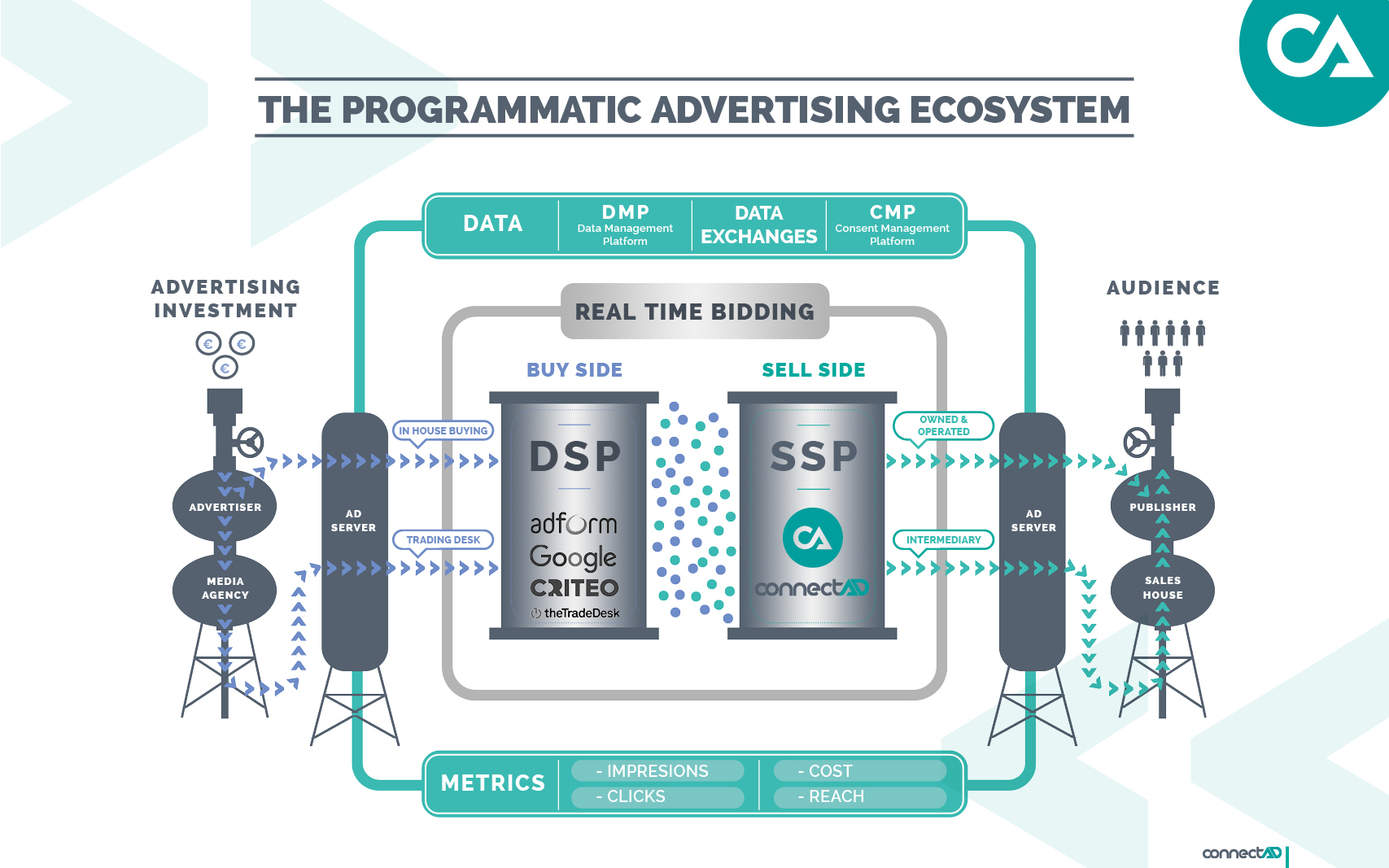How programmatic works
Programmatic In a Nutshell
In short, programmatic is the use of technology to automate and optimize the ad buying process in real-time.
How does it work?
There is a Buy-Side where you can find the Demand-Side Platform (DSP) and there is also a Sell-Side where you can find the Sell-Side Platform (SSP). Both sides are necessary for the bidding process.
How it works:
The audience/user visits a website.
The website is owned by a publisher that is directly connected to a SSP.
The website has inventory available.
When the user is on the website the communication with the SSP starts.
SSP passes user information to DSPs.
Advertisers place bids via DSPs and the highest bid wins.
The user sees the ad.
This all happens in a matter of milliseconds.
DSPs, DMPs and SSPs
Programmatic media buying includes the use of DSPs, DMPs, and SSPs.
DSPs, or demand-side platforms, facilitate the process of buying ad inventory (empty space) on the open market. This is where marketers enter bids for the ads, and the DSP provides the ability to reach the appropriate target audience.
DMPs, or data-management platforms, are responsible for collecting and analyzing a substantial amount of in-depth cookie data. This then allows the marketers to make more informed decisions about who they might be targeting.
So what about the sites that publish the ads? That’s where an SSP comes in. This is a ‘supply-side platform’ that allows websites to manage their unsold ad inventory. An SSP reports attention data, such as how long a visitor was on a specific site or how many pages were viewed per visit. SSPs are ultimately in charge of picking the winning bid and will serve the winning banner ad on the publisher’s site.
Ad Verification
this is the process of checking the banner or the ad is appearing at the right place.
Ad Verification describes the process of systematically tracking a variety of aspects of ad campaign delivery against compliance with the media plan, insertion order, as well as the general compliance to a brand’s image or identity. It's also the result of systematic tracking, stating the level, extent, and type of all misplacements an ad has been exposed to.
With the number of misplaced ads constantly on the rise – namely by fraudulent activity such as Bot Traffic and Ghost Sites or placements whose viewability may not be guaranteed – it has become imperative to verify compliance with all relevant KPIs.
While the methods applied for verification purposes differ, they all allow for an in-depth variance analysis from a financial, brand safety and quality standpoint. Beyond that, ad verification uncovers any cases in which the placement does not match the brand’s image, violates legal restrictions or defies all logic.
Timing matters
The whole verification, analysis, bidding and delivery process takes not longer than 120ms - less than a blink.

